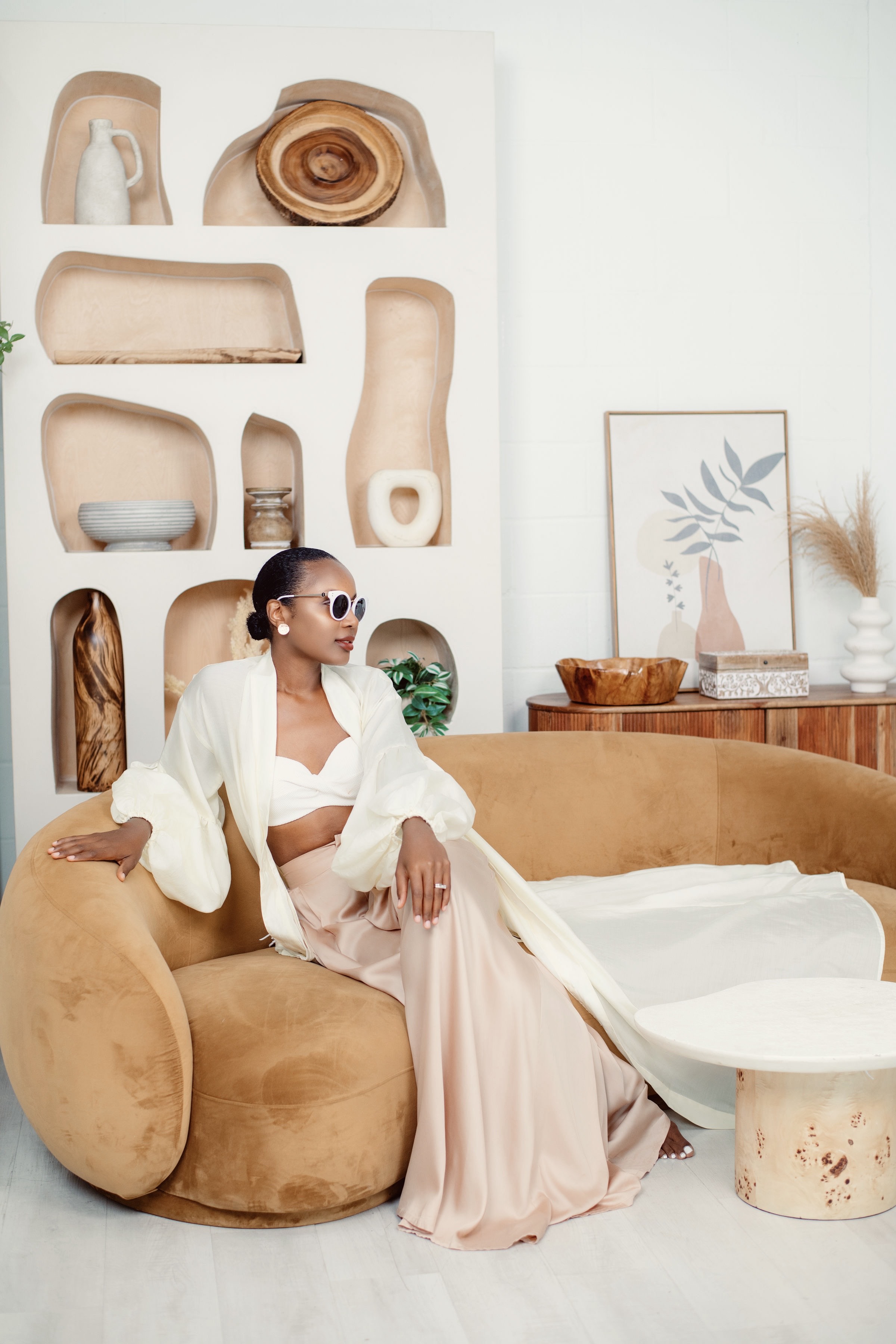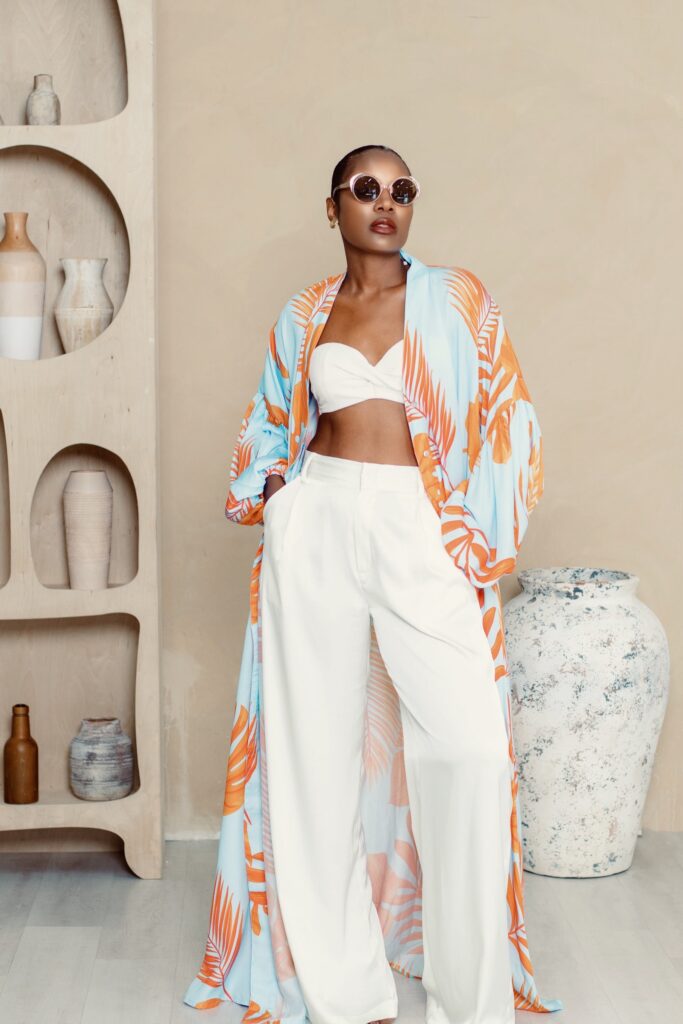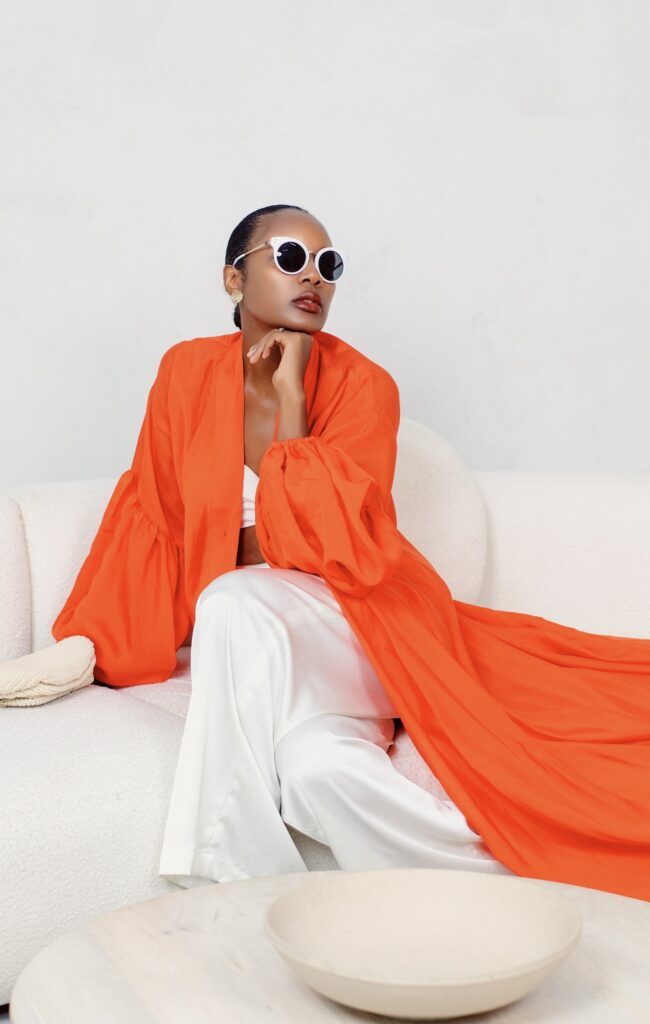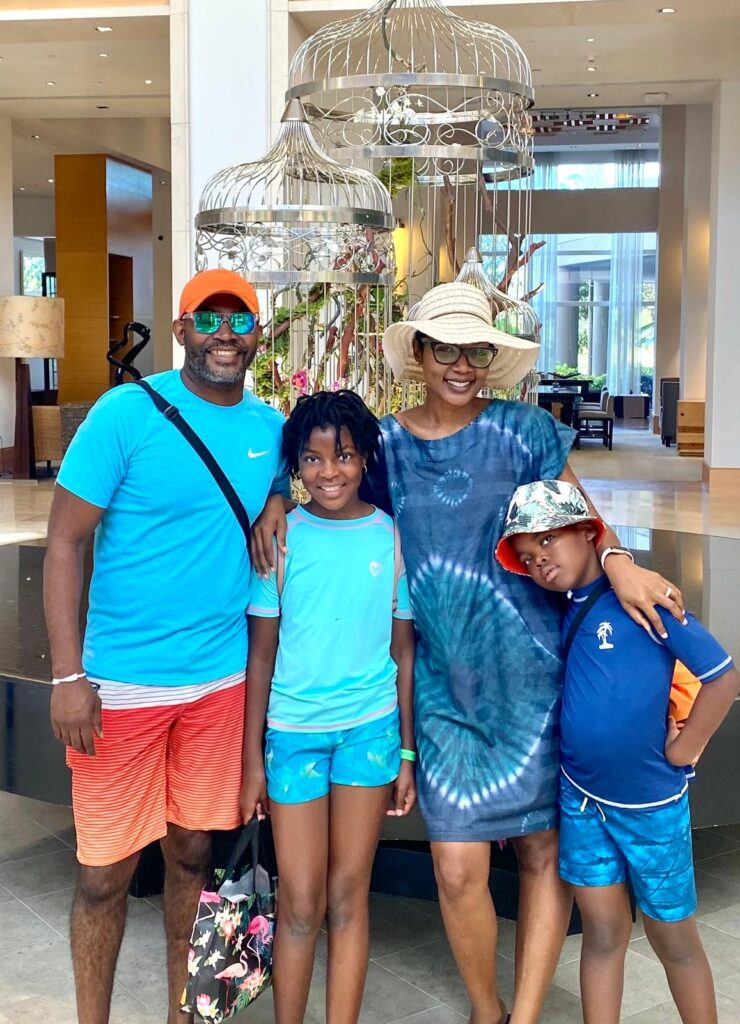
In a world dominated by fast fashion, I had the pleasure of speaking with Asheri Masse, the founder and creative director of Lady by Ash—one of Africa’s emerging slow-fashion brands committed to environmental sustainability. Our conversation delved into the brand’s journey, exploring how creativity and vision intersect with a conscious consumerism business model. Despite the complexities of running a fashion brand in Africa, Asheri’s mission goes beyond profit margins. For her, it’s about merging passion, philanthropy, and a steadfast commitment to sustainability.
Behind every fashion brand is a story with many serendipitous complexities, planting seeds inevitably growing into products that honor its purpose. Designer and lux-lounge clothing brand owner Asheri Masse certainly has an origin story that synchronously aligns with the beautiful garments that we have come to adorn to elevate our self-expression. As a busy mother and anesthesiologist, Asheri took up the challenge of following her passion for fashion design.
Designing and hand-sewing doll dresses at the tender age of nine, inspired by and learning lessons from her mother’s love for the craft, this talented designer’s entrepreneurial journey began even before she understood the complexities of the fashion world. “My mother is a simple woman whom I admire, and her beauty from when I was a little girl shone through her simplicity. I learned it from her, which impacted my sense of style and presence in the world. She taught me to make dresses for my dolls from the scraps of her work. As the dresses I made for my dolls became popular among my neighborhood friends, I started getting orders to make dresses for their dolls, too, making me some valuable pocket money.’

The seed that her mother planted translated decades later to the launch of her fashion brand. With concerns about the depreciation of Africa’s craftsmanship and a desire to contribute to elevating the African fashion industry, the intention to commence her fashion clothing brand in Ghana was intentional. However, with unavailable capital and support for the craft, consistency with quality production often becomes a huddle that leads to production challenges even with affordable grade-A quality tailoring. While there is an opportunity for significant growth in the African fashion industry, sourcing ateliers or production teams is a considerable challenge to getting timely quality orders.
She recounts her experience with an initiative for African women entrepreneurs for exposure to investors, funding, and grants. The organizers swiftly disregarded Asherie’s plight for sustainable African fashion education and concerns about unethical fabric tendering techniques. Additionally, the lack of interest in eco-friendly and sustainable practices highlighted the significant need for more awareness on the continent. The dichotomy was between the limited funds and unawareness of the benefits of slow fashion. “It’s not just about what the products feel like but also how they are made. Unconscious consumerism is one of the industry’s challenges, Africa not excluded.“
With one of her mentors acknowledging the validity of her concerns about the fashion industry’s impacts on the continent, Asheri’s drive to focus on the mission grew more substantial, and she made a necessary move beyond the continent. So, with extensive research and purpose to honor the vision of creating an impact beyond how clothes fit the body, she journeyed away in search of alignment. “For me, it’s beyond aesthetics. It’s an opportunity to support and empower working women in the industry, helping the economy and ensuring practices that help rather than hurt the continent. I think about what kind of fabrics are used, and even if they are recycled synthetic, are they cotton? Is it natural?”
Fortunately, finding a manufacturer in Thailand that is aligned with conscious practices that support less use of toxins or dumping waste leading to environmental pollution was the pivot needed to grow the brand. It was a perfect match as the manufacturer’s staff included trained women healing from domestic violence.

What is the process for designing your fabrics? “Most of the prints are in-house and designed by me. I use a graphic designer in Ghana to render the visuals. Then, we send the files to the manufacturer, which uses an all-natural fabrics and dyes textile supplier. So obviously, the cost is up. The fabrics are then primed and tested for bleeding as natural fabrics like tencel, linen, or cotton tend to hold in dyes with less brightness than, say, polyester. The fabrics are then reassessed and used to create samples. It may be a long, tedious, and less budget-friendly process, but eco-friendly is a non-negotiable”.
What’s your production volume and some challenges you face with manufacturing and sales?
“We only make an average of 50-100 items per design to avoid inventory waste. To remain ethical, we must pay these women enough to maintain their livelihood. Hence, this greatly affects profit margins as our production-per-unit costs much more than other competing markets. Our price point is also a factor as it’s not comparable to production cost, but that is considerate of our customers as we are a small brand working on exposure and creating our community of clients who will continue to support slow fashion even as we grow into fair pricing. The issue of production faux-pas also leaves us with some unusable inventory. Like most small brands, there is a growing need to expand beyond the customer base, which means price drops. So there’s just enough to recycle for another mini-collection after production, shipping from Thailand, customs fees, and shipping to customers.”
You must be passionate about your brand to leverage that much. “I spend a lot of time on my brand. I may not get deserving monetary compensation, but it comes in when return customers support the work.”
I’ve personally enjoyed some of your pieces, and I have to say, your quality and design are remarkable. Your pieces are simple but impactful, and it’s evident that this is your fashion language. Are you intentional about the aesthetics of your design? “I’ve learned over the years that although we may not control our environments, we can greatly control what we wear. So that’s me, that’s who I am. Comfort has always been my priority, and it supports effortless presence, so I show up fully as Ash. Simplicity is Elegance, and classic, simple designs tend to create that. So, yes, that greatly impacts what I design.”
One thing I noticed about your brand is its versatility and functional design. Is that intentional?
“I design for all women. The goal is for women to feel beautiful and elegant without feeling self-conscious, no matter their body shape. It’s to give them a styling range as well. Whether with accessories or different functional styling, that ties in with the crucial aspect of our practices – sustainability and recyclability.”
So clearly, this is a question you’ve probably heard before. I noticed you model many of your designs. Are you a model, and did that factor into becoming a designer? “Hahaha, actually, I have been asked that; funny enough, I was a Tomboy as a kid. Budget constraints and the lack of dependable talent led to improvisations, and given that I am the most reliable and affordable option, my love for modeling took off. It’s also ingenious for branding and led me to become the face of the brand organically.
This collection transitions through various spaces, comfortably blending in and honoring functionality and versatility. It’s evident your designs are made to fit the body and not vice versa. The brand’s aesthetic for its recent capsule resort collection truly embodies that. It flows with the body’s curves with a regal essence, and each piece in this collection honors that. Where did the inspiration for this collection come from? “Customer feedback is one of my most valued resources. One of my customers reached out with a suggestion to consider curvy women with pant designs. I must say it came on time and was a sign to inspire the resort collection I was working on. So I thought it would be great to have something like a coverup dress that can be worn at a resort, brunch, or a party and that is carried throughout with the ability to style every piece with each other. It truly translated that we sold out within a week of premiering.”
What does the future look like for Lady by Ash? “The brand started as a women’s wear brand; however, we are rebranding to include men and children. Our style and fabrics like linen and Tencel are light and favored for men’s and children’s clothing, as they are also quite easy to maintain.”

Last Thoughts
The beauty of style is the uniqueness of each encounter. It doesn’t matter if ten people wear the same pieces; they may look similar, but they’re experienced differently. Why? Because each individual expresses it differently.
The beauty of style is not in learned perceptions; rather, it’s in its unique energy. It starts with a personal expression that has never been seen before. It’s not popular or complacent with the rules. It makes its own rules. It’s like that painting on the wall that makes no sense, but people can’t stop staring at it for hours because it defies their conventional thinking and pushes them to feel something different, atypical, and liberating.
That’s where functional design creates a medium for multiple expressions. For creative designers like Lady by Ash, creativity is about the art. It’s about experiencing it not for trendy purposes but for personal expression. It’s not just about the clothing we make; it’s the energy we put into intentionally creating something beautiful and embodying that energy, along with how we bring it to life as we authentically carry our fashion.